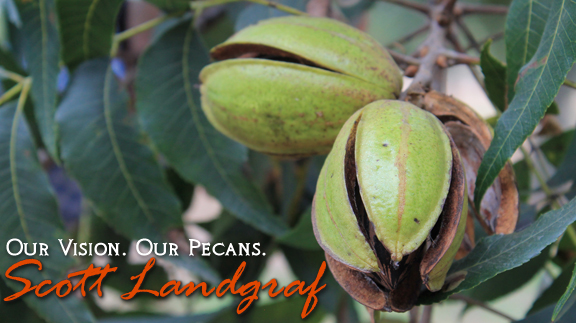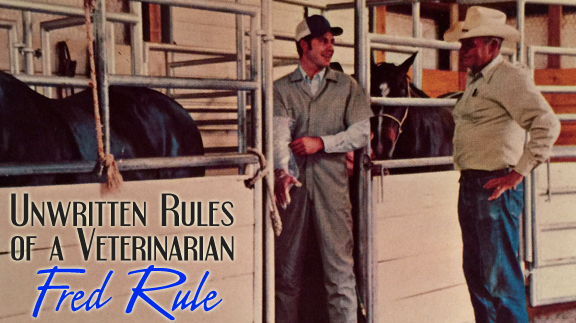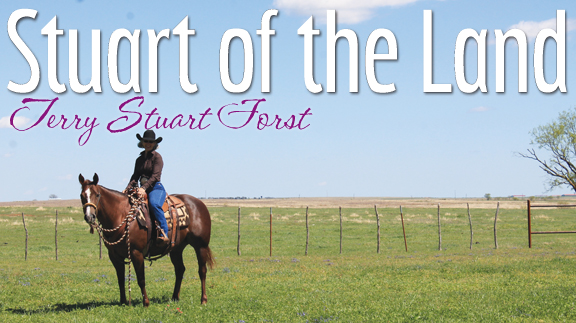Farm & Ranch
Our Flight to Hartsel
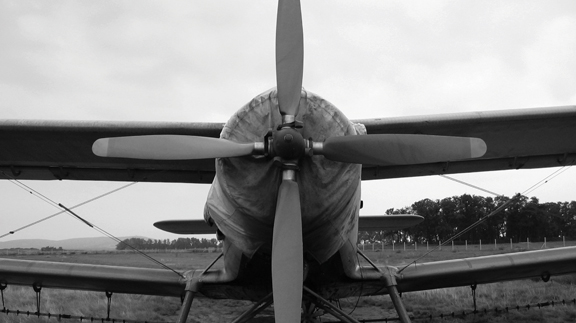
By Ralph Chain
I have known Jake Graham a long time. We bought a herd of Angus cows in Nebraska together and some other registered cows from Alfred Draton in the O’Neill, Nebraska, area. We also partnered on quite a few other cattle.
I knew a fellow named Ray Moore, who had a ranch in Hartsel, Colo. He was a Longhorn breeder, and I got acquainted with him. He wanted us to send some yearling steers out to Hartsel, Colo., to summer. I told Jake about the Colorado deal. Jake was interested in going in partners with us, and we would send some cattle out there to summer. We thought we should go out and look at the grass before we sent any steers there. We decided to fly to Hartsel and look at the pasture.
Jake had a good friend named Charlie Williams in Fairview. Charlie was Jake’s banker, and he flew a lot. He told Jake if he ever needed to go anywhere he knew a good charter service in Oklahoma City that would fly us. We decided to have Charlie contact this flying service in Oklahoma City, and we would fly to Hartsel, Colo. We had to fly into Colorado Springs, Colo., the closest airport. Hartsel was just a small place.
The charter service had an Air Commander, which is a twin-engine plane. Jake thought that this was what we would be flying to Colorado Springs in. We met at the Fairview Airport early one morning, and we waited around there for a short while. Soon this little airplane came in, actually, it was a fair-size airplane, but it wasn’t a twin engine: it was a single engine Air Commander. It was a pretty nice airplane. We didn’t have any second thoughts. We got on board. There was a young kid flying it, and come to find out, he had just got out of the Air Force the day before and was used to flying jets. I think this was on a Monday morning, and he had applied for a job flying charter service for this company in Oklahoma City. This was his first job.
Somewhere in western Kansas he got to fooling with the radio. We found out that we didn’t have any radio contact with anybody. We couldn’t talk to anyone at the towers or anywhere, but this kid said, “We’ll be all right.” I said, “How are you going to let them know when we get to Colorado Springs that we want to land?” And he said, “Well, there is a procedure that we can do to let the tower know that we want to come in for a landing.” So, we finally arrived at Colorado Springs and sure enough he flew over the tower and gave some sort of signal, and they gave us the green light to come on in and land.
Our pilot wasn’t used to flying this sort of airplane. I was sitting in the front seat. When we came in, he landed too hard on the nose wheel and the wheel gave way, bending the propeller. It almost came back into the windshield where I was sitting. It liked to scare us to death. Here we sat in the middle of a busy airport with a busted nose wheel and a propeller bent back almost into the windshield. They came out and pulled us off of the runway with a vehicle. I told our pilot that Jake and I will just take a commercial airliner back to Oklahoma City, and somebody can meet us there. The pilot said, “There’s no need. They’ll have to fly out to pick me up, and you might as well ride back with us. There’s no need spending money for tickets.”
We had kind of mixed emotions on whether we wanted to do that or not. Anyway, he said, “Why don’t you go on out and do what you have to do and call me at the office, and I’ll see what they want to do. I’m sure they’ll send a plane out, and you might as well ride back with us.”
We rented a car and drove to Hartsel, which is probably 50 miles or so, I don’t remember exactly. We got there and looked at the pasture. I called back to the Colorado Springs Airport and got a hold of this kid, our pilot. He said, “They’re going to send a plane out, and they’ll pick us up here at the airport about 3:00 p.m.” We had to hurry to get back. We just knew they were going to send that twin engine Air Commander out to pick us up.
We got back in to Colorado Springs and checked in our car and went into the terminal and waited. He said, “We’ll pick you up in front of the terminal doors there.” We walked up to the terminal and looked outside, down the runway. There was an Air Commander sitting there and Jake said, “There’s the plane we’re going to fly back in, I bet.” And I said, “Well, I hope so.” So we stood there a little bit and looked up and down the runway. Pretty soon here came this little, bitty airplane that looked like a kite. It pulled up right in front of the door and there sat our pilot, the one who had flown us out, and another kid younger than our pilot, flying the plane. They taxied right up there where we were standing and opened the door on their little ole airplane and said, “Well, are you ready?”
Jake and I kind of looked astonished. I didn’t know how in the world all four of us were going to get in that little airplane. We stammered and stuttered around there, and Jake or I said, “Well, are you sure we can all ride back in that little ole airplane?” And this kid said, “Oh yes, we’ve got plenty of room.” Well, Jake was a big guy. He probably weighed 260 pounds, and he had a big ole sheep-lined coat on. And I was pretty well dressed, as it was cold. They said, “Get in.” So there was nothing we could do but get in. They had taxied right up where we were standing, and we could hardly say we weren’t going to go. We managed to get in.
Jake got in, and he took off his big coat. I got in and sat on his lap, almost. We were crumpled up in this little Drummond Airplane. It must have been the littlest airplane they ever made. Jake still had mixed emotions and said, “Are you sure this is all right?” This kid said, “Yes, we’re all right.” We all got in this thing, and we taxied way down to the north end of the runway. We took off, but we could not get that thing off of the ground. Every time the pilot tried to get some altitude, a beeper would go off. Finally, Jake said, “Why don’t you turn around and we’ll get off.” This kid said, “No, if we can get some altitude, we’ll be okay.” We finally got enough altitude to get over the fence posts. I don’t know how far we flew at this low level, just missing the tops of the fences.
Here we were in Colorado Springs, pretty open country, and why these kids did this I’ll never know. But anyway, we finally got into the air and we were flying into the southeast. I don’t think we ever had a southeast wind before, but that day, after we flew and finally got some altitude, we were flying right into the southeast wind. I think we left Colorado Springs about 3:00, I’m not for certain. We flew and we flew and we flew. I think we could have walked faster than we were going, because here we were overloaded and flying into the wind. About 6:00 p.m. we went over Two-Buttes, Colo. It took us about two hours to get there. We could have driven in a car there faster.
Read the October issue to learn more!
Farm & Ranch
Cattle Nematodes (Worms)
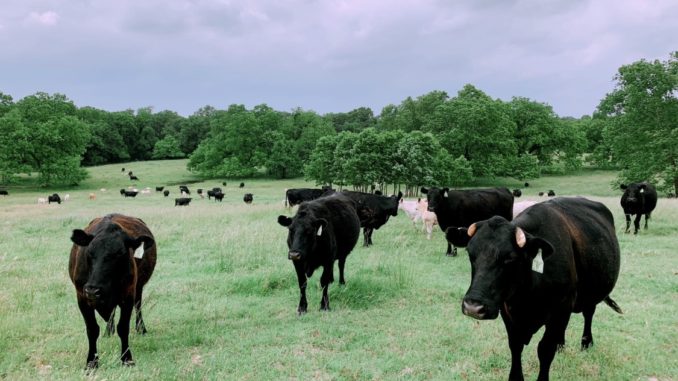
Barry Whitworth, DVM | Senior Extension Specialist | Department of Animal & Food Sciences
According to the Mesonet, Oklahoma received some much-needed rain in late April (2023). With the moderate temperatures and high humidity, the environment is perfect for the proliferation of gastrointestinal nematodes (GIN) which are commonly called “worms.” Cattle can be infected with a variety of GIN. Most do not cause issues unless husbandry practices are poor. However certain GIN have been associated with disease. The most pathological GIN in cattle is Ostertagia ostertagi. Cooperia species and Haemonchus species are two that have been implicated with production issues. Control of these parasites is constantly changing due to environment, anthelmintic (dewormer) resistance, and consumer preference. Cattle producers should develop a plan to manage these parasites.
In order for GIN to complete their life cycle, certain environmental conditions must exist. The development stage begins with passing of the egg in the feces of the animal. If the egg is to hatch, the temperature must be warm and the humidity needs to be close to 100%. Ideal temperature ranges from 70⁰ to 80⁰ Fahrenheit (F), but any temperature above 45⁰ F will allow for development. Temperatures above 85⁰ F or below 45⁰ F will begin to hamper development. Humidity needs to be 80% or higher.
Once the egg hatches, the larva goes through a couple of molts to reach the infective stage which is the third stage larva (L3). L3 must have moisture to free itself from the fecal pat. Once free, it rides a wave of water on to a blade of forage. Once ingested, this begins the prepatent or pre-adult stage. Two molts take place during this stage (L3 to L4 and L4 to L5). If conditions are not favorable for survivability of offspring, L4 will go into an arrested development stage (hypobiosis) for a period of time. The patent or adult stage is the mature breeding adult.
Once inside the body, the parasite will migrate to certain locations in the digestive tract. For example, O. ostertagi develop in the gastric gland in the abomasum. H. placei and H. contortus will migrate to the abomasum. Cooperia species will live in the small intestine. A few like Trichuris (whipworms) are found in the large intestine.
Clinical signs of parasitism vary according to the species of parasite, burden, and site of attachment. Severe disease, which is referred to as parasitic gastroenteritis (PGE), with internal parasites is unusual with today’s control methods. Clinical signs of PGE are lack of appetite, weight loss, weakness, diarrhea, submandibular edema (bottle jaw), and death. However, most parasite infection are subclinical which means producers do not see clinical signs of disease. In subclinical infections, the parasite causes production issues such as poor weight gain in young cattle, reduced milk production, and lower pregnancy rates.
Producers should be monitoring their herds for parasites throughout the year but especially in the spring when conditions are ideal for infection. A fecal egg count (FEC) is a good way of accessing parasite burdens. Livestock producers need to gather fecal samples from their herd periodically. The samples should be sent to their veterinarian or a veterinary diagnostic lab. Different techniques are used to access the number of eggs per gram of feces. Based on the counts, the producer will learn the parasite burden of the herd. Producers can use this information to develop a treatment plan.
In the past, GIN control was simple. Cattle were routinely dewormed. Unfortunately, anthelmintic resistance has complicated parasite control. Now proper nutrition, grazing management, a general understanding of how weather influences parasites, biosecurity, refugia, anthelmintic efficiency, and the judicious use of anthelmintics are important in designing an effective parasite management program. All of these considerations need to be discussed in detail with a producer’s veterinarian when developing a plan for their operation.
Cattle producers need to understand that parasites cannot be eliminated. They must be managed with a variety of control methods. Designing a parasite management plan requires producers to gain a general understanding of life cycle of the parasite as well as the environmental needs of the parasite. Producers should use this information as well as consult with their veterinarian for a plan to manage GIN. For more information about GIN, producers should talk with their veterinarian and/or with their local Oklahoma State University Cooperative Extension Agriculture Educator.
References
Charlier, J., Höglund, J., Morgan, E. R., Geldhof, P., Vercruysse, J., & Claerebout, E. (2020). Biology and Epidemiology of Gastrointestinal Nematodes in Cattle. The Veterinary clinics of North America. Food animal practice, 36(1), 1–15.
Navarre C. B. (2020). Epidemiology and Control of Gastrointestinal Nematodes of Cattle in Southern Climates. The Veterinary clinics of North America. Food animal practice, 36(1), 45–57.
Urquhart, G. M., Armour, J., Duncan, J. L., Dunn, A. M., & Jennings, F. W. (1987). In G. M. Urquhart (Ed). Veterinary Helminthology. Veterinary Parasitology (1st ed., pp 3-33). Longman Scientific & Technical.
Farm & Ranch
The Value of Vitamin A
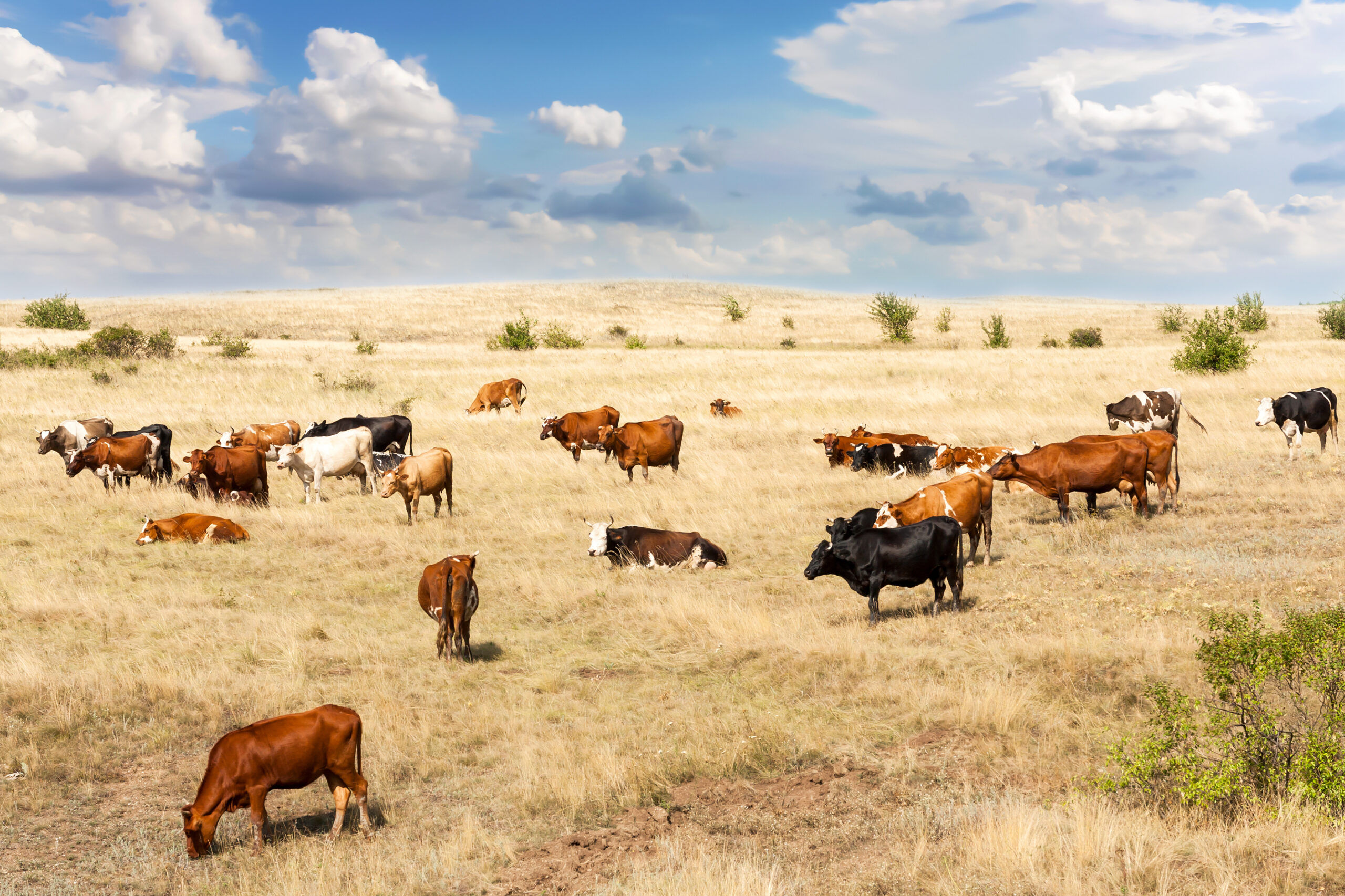
Barry Whitworth, DVM – Area Food/Animal Quality and Health – Specialist for Eastern Oklahoma
A ranch in Australia experienced an abnormally high number of stillbirths and weak born calves in 2004-2005. An investigation revealed that the usual infectious causes were not the problem. After additional testing, veterinarians diagnosed low levels of vitamin A as the cause.
According to Dr. Greg Hanzlicek, with the Kansas State Veterinary Diagnostic Laboratory (KSVDL), Kansas had an unusually high number of stillbirth cases and weak born calves in the spring of 2019. After many laboratory tests, it was concluded that the problem stimmed from a lack of energy, protein, Vitamin A, or combinations of all of these.
Both of the above examples demonstrate the importance of vitamin A in reproductive efficiency. Research has shown that low vitamin A levels during pregnancy are associated with abortions, stillbirths, and weak born calves. In addition to playing an important role in reproductive efficiency, vitamin A is essential for vision, bone growth, and maintaining epithelial tissue such as skin and hooves.
Animals obtain vitamin A from consuming green forage and/or the addition of vitamin A supplements to the diet. Lush green pastures contain high amounts of vitamin A. As plants mature and during times of drought, the amount of vitamin A decreases. The ranch in Australia experienced below average rainfall in the previous two years prior to the calving season. During the calving season, rainfall was below average with very dry conditions and little green forage was available.
In general, animals obtain adequate amounts of vitamin A by grazing green forage. Animals grazing green pastures will build a healthy store of vitamin A in the liver. When vitamin A is in short supply, the stores in the liver prevent deficiencies. According to Dr. Lalman, Extension Beef Cattle Specialist Oklahoma State University, the stores should last 2 to 4 months during times of deficiency. During times when green forage is not available, vitamin A supplements need to be added to the diet to prevent deficiencies.
When vitamin A levels are deficient, night blindness is one of the earliest clinical signs. Other eye issues include clouding of the cornea, ocular discharges, and possible ulcerations. Skin issues found when levels of vitamin A are deficient include a dry rough coat, scales on the skin, and dry cracked hooves. Other neurological signs include incoordination or gait problems. Seizures may occur due to the increase cerebrospinal fluid pressure. Birth defects have also been attributed to low vitamin A levels.
Animals displaying vitamin A deficiency should be treated immediately with vitamin A injections. If treated early, response is usually rapid and complete. However, delaying treatment may result in irreversible damage. Even with treatment, cattle with vision impairment due to vitamin A deficiency may not regain their sight.
Preventing Vitamin A deficiency depends on producers being attentive to the environmental conditions that favor low vitamin A levels in forage. During these times, producers need to supplement the diet with vitamin A. Producers need to be aware that Vitamin A supplements degrade rapidly, so vitamin A supplements should not be stored for long periods of time. In addition to vitamin A supplementation, research indicates that diets low in protein result in poor absorption of vitamin A. It is important that producers ensure that the rations have sufficient protein levels. Lastly, since colostrum contains high levels of vitamin A, producers need to ensure that newborns obtain adequate amounts of colostrum at birth.
Similar to the Australian example, most of Oklahoma had below average rainfall for the year of 2022. This resulted in pasture quality decreasing earlier than normal. Due to this year’s lack of green forage, liver stores of vitamin A may be inadequate for the animal’s needs. Producers need to ensure that the diets of their cattle have adequate amounts of vitamin A, energy, and protein. For more information about Vitamin A, producers should contact their veterinarian and/or visit with their Oklahoma State University County Ag Educator.
References
Hanzlicek, G. (2019, May). Difficult Calving Season Findings:2019. Diagnostic Insights. www.ksudl.org/resources/news/diagnostic_insights/may2019/difficult-calving-season2019.html.
Hill, B., Holroyd, R., & Sullivan, M. (2009). Clinical and pathological findings associated with congenital hypovitaminosis A in extensively grazed beef cattle. Australian Veterinary Journal, 87(3), 94–98.
Parker, E. M., Gardiner, C. P., Kessell, A. E., & Parker, A. J. (2017). Hypovitaminosis A in extensively grazed beef cattle. Australian veterinary journal, 95(3), 80–84.
Farm & Ranch
Lice in Cattle
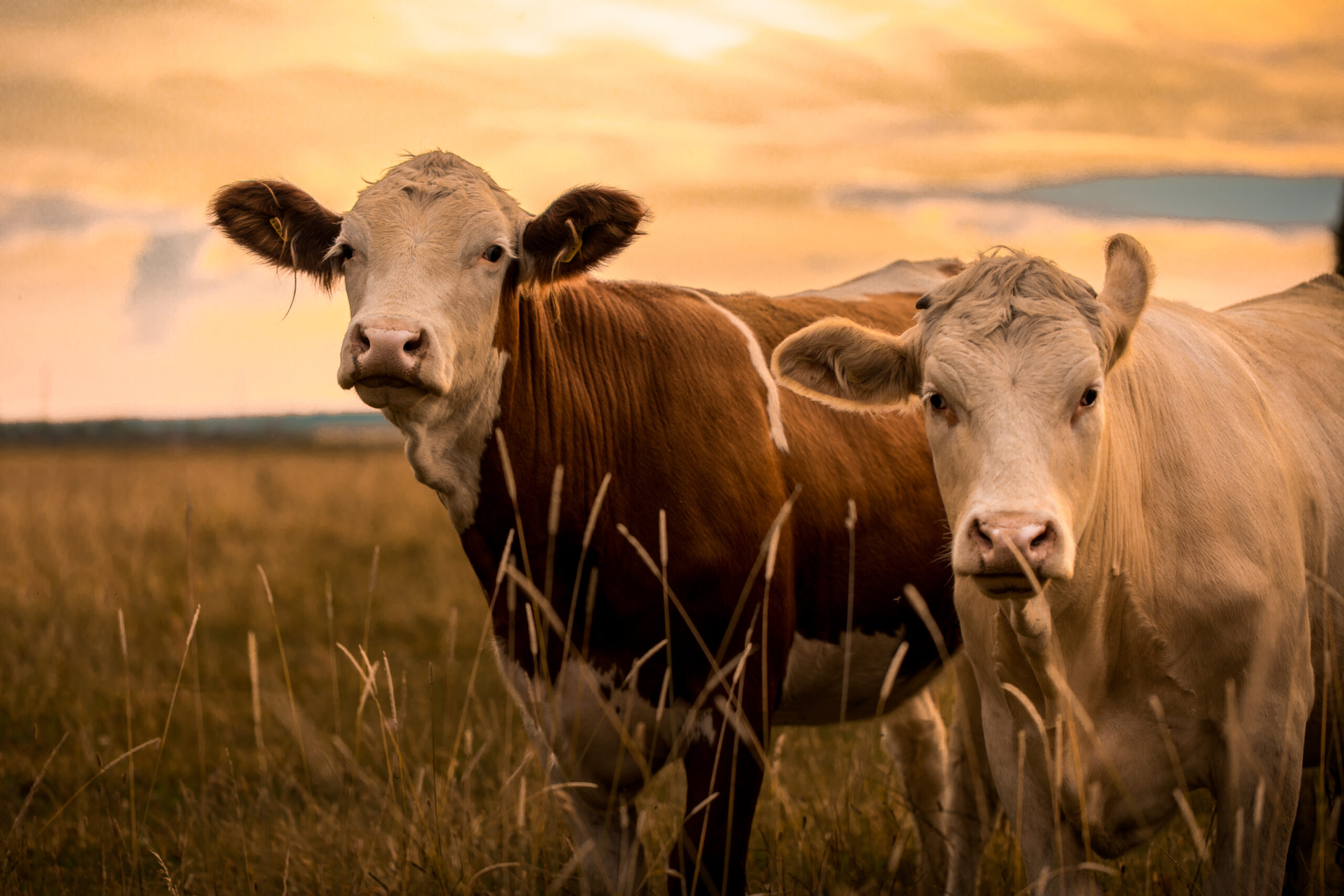
Barry Whitworth, DVM, MPH | Senior Extension Specialist
Department of Animal & Food Sciences | Freguson College of Agriculture | Oklahoma State University
Cattle lice cost Oklahoma cattlemen millions of dollars each year in decreased weight gains and reduced milk production. If cattle producers have not treated their cattle for lice this fall, they need to consider what type of lice control to initiate. This is especially true for cattle producers that had problems in the previous year. Cattle producers should monitor cattle closely during the months of December, January, and February. Producers should not wait until clinical signs appear before beginning treatment.
The life cycle of the different species of cattle lice are very similar. The life cycle begins with the female louse attaching her egg to a shaft of hair. The egg will hatch as a small replica of the adult. After several molts, the adult will emerge. The cycle takes around 3 to 4 weeks to complete. These newly hatched lice will spend their entire life on the host and are host specific which means cattle cannot be infected with lice from other animals.
Small numbers of lice may be found on cattle in the summer, but high populations of lice are associated with cold weather. Since cattle tend to be in closer proximity to each other in the winter, lice can spread easily between cattle. A small percentage of cattle tend to harbor larger numbers of lice. These animals are sometimes referred to as “carrier animals”, and they may be a source for maintaining lice in the herd. As with many other diseases, stress also contributes to susceptibility and infestation.
Signs of lice infections in cattle are hair loss, unthrifty cattle, and hair on fences or other objects. If producers find these signs, they may want to check a few animals for lice. They can check for lice by parting the hair and observing the number of lice per square inch. If an animal has 1 to 5 lice per square inch, they are considered to have a low infestation. Cattle with 6 to 10 lice would be considered moderately infested. Any cattle with more than 10 lice per square inch are heavily infested.
Cattle have two types of lice. One type is the biting or chewing louse. These lice have mouth parts that are adapted to bite and chew the skin. The second type is sucking louse. These lice have mouth parts that will penetrate the skin and suck blood and other tissue fluids. It is not uncommon for cattle to be infested with more than one species of lice.
The biting or chewing louse is Bovicola (Domalinia) bovis. This type of lice feeds on hair, skin, skin exudate, and debris. Typical clinical signs with this type of louse are hair loss, skin irritation and scabs on the skin. They are found on the shoulders and back.
Four types of sucking lice can be found in the United States. The first is the “short nose” louse or Haematopinus eurysternus. This is the largest cattle louse. This louse is found on the neck, back, dewlap, and base of the tail. The second is the “long-nose” louse or Linognathus vituli. This louse is bluish in color with a long slender head. This louse is found on the dewlap, shoulders, sides of the neck, and rump. The third is the “little blue” louse or Solenoptes cappilatus. This louse is blue in color and is the smallest cattle louse. This louse is found on the dewlap, muzzle, eyes, and neck. The last is the “tail” louse or Haematopinus quadripertuses. This louse has been found in California, Florida, and other Gulf Coast States. This louse is found around the tail.
The sucking lice have the potential to cause severe anemia if the numbers are high. This can result in poor doing cattle or in extreme cases death. They also can spread infectious diseases. The long-nose louse has been found to be a mechanical vector for anaplasmosis.
Prevention of lice infestation should begin in the fall. Producers should not wait for clinical signs to appear before beginning treatment. Several products are available to control lice. Producers should read and follow the label directions. Producers should keep in mind that many of the lice control products require two administrations to control lice. Failure to do this may result in cattle having problems with lice infestations.
Some producers have complained that some products do not work. These complaints have not been verified; however, this is a good reason to consult with a veterinarian for advice on what products to use. Most treatment failures are associated with incorrect application not resistance. Proper application of Pour-On insecticides is to administer from the withers to the tailhead. Also, the proper dose is essential for good control.
Cattle producers need to consider a few other things in lice control. Since cattle in poor body condition are more prone to lice infestation, producers need to be sure that the nutritional needs of their cattle are being met. Cattle that have a history of lice infestations should be culled. Lastly, any purchased cattle need to be inspected for lice before entering the herd. If lice are found, the animals should be isolated and treated before entering the herd.
If producers would like more information on lice in cattle, they should contact their local veterinarian or Oklahoma State University County Extension Agriculture Educator. They may also want to read Oklahoma Cooperative Extension Fact Sheet Beef Ectoparasites VTMD-7000 at https://extension.okstate.edu/fact-sheets/beef-cattle-ectoparasites.html.
-

 Attractions8 years ago
Attractions8 years ago48 Hours in Atoka Remembered
-

 Country Lifestyle8 months ago
Country Lifestyle8 months agoJuly 2017 Profile: J.W. Hart
-

 Country Lifestyle9 years ago
Country Lifestyle9 years agoThe House a Treasure Built
-

 Country Lifestyle3 years ago
Country Lifestyle3 years agoThe Two Sides of Colten Jesse
-

 Outdoors7 years ago
Outdoors7 years agoGrazing Oklahoma: Honey Locust
-

 Equine8 years ago
Equine8 years agoUmbilical Hernia
-

 Outdoors5 years ago
Outdoors5 years agoPecan Production Information: Online Resources for Growers
-

 Farm & Ranch7 years ago
Farm & Ranch7 years agoHackberry (Celtis spp.)


